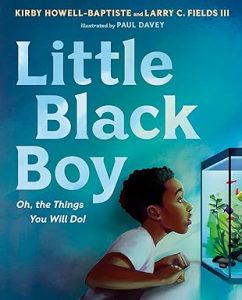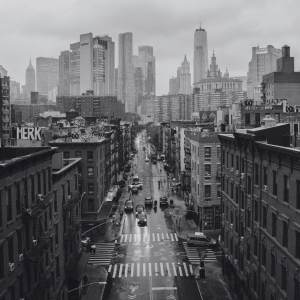The Art of Ekphrasis: When Poetry Meets Visual Art in the Black Aesthetic
4 min read
At its root, ekphrasis is the vivid description of a work of art within a work of literature—most often poetry. It’s where one medium speaks through another, where the brushstroke becomes a metaphor, and color transforms into cadence. Across centuries, poets have turned to paintings, sculptures, and photographs as muses. But within the Black aesthetic, ekphrasis takes on a distinct and powerful resonance: it becomes not just an artistic dialogue, but an act of cultural reclamation, reimagining, and affirmation.
In the hands of Black poets, ekphrasis becomes more than interpretation—it becomes conversation, critique, celebration, and sometimes, radical reinvention.
What Is Ekphrasis, Exactly?
Traditionally, ekphrastic poetry aims to bring visual art to life through words. From ancient descriptions of Achilles’ shield in Homer’s Iliad to John Keats’ famous “Ode on a Grecian Urn,” poets have long found inspiration in the frozen beauty of art objects, crafting verses that animate them, interrogate them, or meditate on their meaning.
Yet for Black poets, ekphrasis is often not simply about aesthetic appreciation. It’s about contextualizing and reclaiming. It’s about seeing themselves—often historically erased from galleries and museums—reflected, imagined, or defiantly inserted into the artistic canon.
Ekphrasis in the Black Aesthetic: Beyond Description
The Black aesthetic is rooted in expressing Black life, history, beauty, and struggle on its own terms. When Black poets engage in ekphrasis, they often do so to:
- Recenter narratives: Many artworks either exclude Black bodies or depict them through colonial or exoticized lenses. Black poets use ekphrasis to reframe the gaze, telling stories from within rather than from outside.
- Honor Black artists: Ekphrastic poems frequently pay homage to Black painters, sculptors, and photographers whose works may not have received mainstream recognition.
- Challenge dominant histories: By interpreting European masterpieces or American visual traditions, Black poets critique the erasures and stereotypes embedded in visual culture.
- Celebrate resilience and creativity: Through the lens of visual art, poets affirm the beauty, dignity, and complexity of Black life.
Examples of Ekphrasis in Black Poetry
Rita Dove, former U.S. Poet Laureate, has a long history of engaging visual art in her work. In poems like “Parsley” and “The Great Palaces of Versailles,” she layers political history, racial violence, and imagery in ways that mirror the layers of visual symbolism found in paintings.
Natasha Trethewey, another former Poet Laureate, often uses ekphrasis to explore the haunting echoes of American history. Her Pulitzer Prize-winning collection Native Guard and later works like Thrall feature poems that respond directly to paintings, etchings, and photographs that depict Black subjects, often engaging with the tension between visibility and distortion.
Terrance Hayes, in his book American Sonnets for My Past and Future Assassin, creates a kind of abstract ekphrasis—less responding to specific visual works, but crafting word paintings that evoke the emotional landscapes of Black identity and survival in America.
Yusef Komunyakaa’s poem “Facing It,” inspired by the Vietnam Veterans Memorial, uses ekphrasis to explore personal trauma and racial memory, blending the visual experience of the memorial with a deeper, internalized reflection.
Camonghne Felix and contemporary poets like Morgan Parker and Jericho Brown also regularly engage visual references—album covers, pop culture images, museum pieces—folding them into modern, intersectional explorations of Black identity.
Visual Art as a Living Archive
For Black poets, visual art is often a living archive—a source of memory, protest, pride, and longing. Sculptures, paintings, and photographs are not inert objects to be described; they are interlocutors, ancestors, fellow artists. The act of writing ekphrastic poetry is a way to speak with them, to pull them into dialogue across time and space.
Moreover, in contemporary times, many Black poets have extended the boundaries of ekphrasis by responding not just to traditional fine art, but to street murals, graffiti, fashion photography, and digital art—recognizing that Black creativity has always lived in many forms, both within and outside of institutional walls.
A Creative Convergence
The convergence of poetry and visual art within the Black aesthetic reveals how deeply interconnected the senses are in storytelling. Ekphrasis becomes a site of invention and reclamation, where Black poets reimagine the visual world through their own experiences, politics, and dreams.
In these layered conversations between image and word, a powerful truth emerges: Black art, in all its forms, continues to speak—boldly, beautifully, and on its own terms.
These poetry collections and books either include ekphrastic poems or beautifully reflect the Black aesthetic at the intersection of visual and literary art.
Poetry Collections:
- Catalog of Unabashed Gratitude by Ross Gay
– Visually rich and sensorial, touching on the poetic image in nature and culture. - There Are More Beautiful Things Than Beyoncé by Morgan Parker
– Pop culture as visual art—layered, sharp, and deeply rooted in Black cultural imagery. - American Sonnets for My Past and Future Assassin by Terrance Hayes
– While not strictly ekphrastic, these poems radiate the visuality of Black existence and resistance. - The Black Interior by Elizabeth Alexander (Essays)
– Lyrical essays about Black visual culture, history, and literature. Bridges poetry and art critique. - Playlist for the Apocalypse by Rita Dove -This is Dove’s most recent poetry collection and a powerful choice. While it’s not strictly ekphrastic, the poems are rich in imagery, cultural memory, and often feel visually charged—like paintings made of language. She explores everything from illness and loss to politics and historical memory, all with her signature lyrical precision. Some pieces subtly echo the ekphrastic tradition through vivid renderings of people, settings, and cultural icons.








